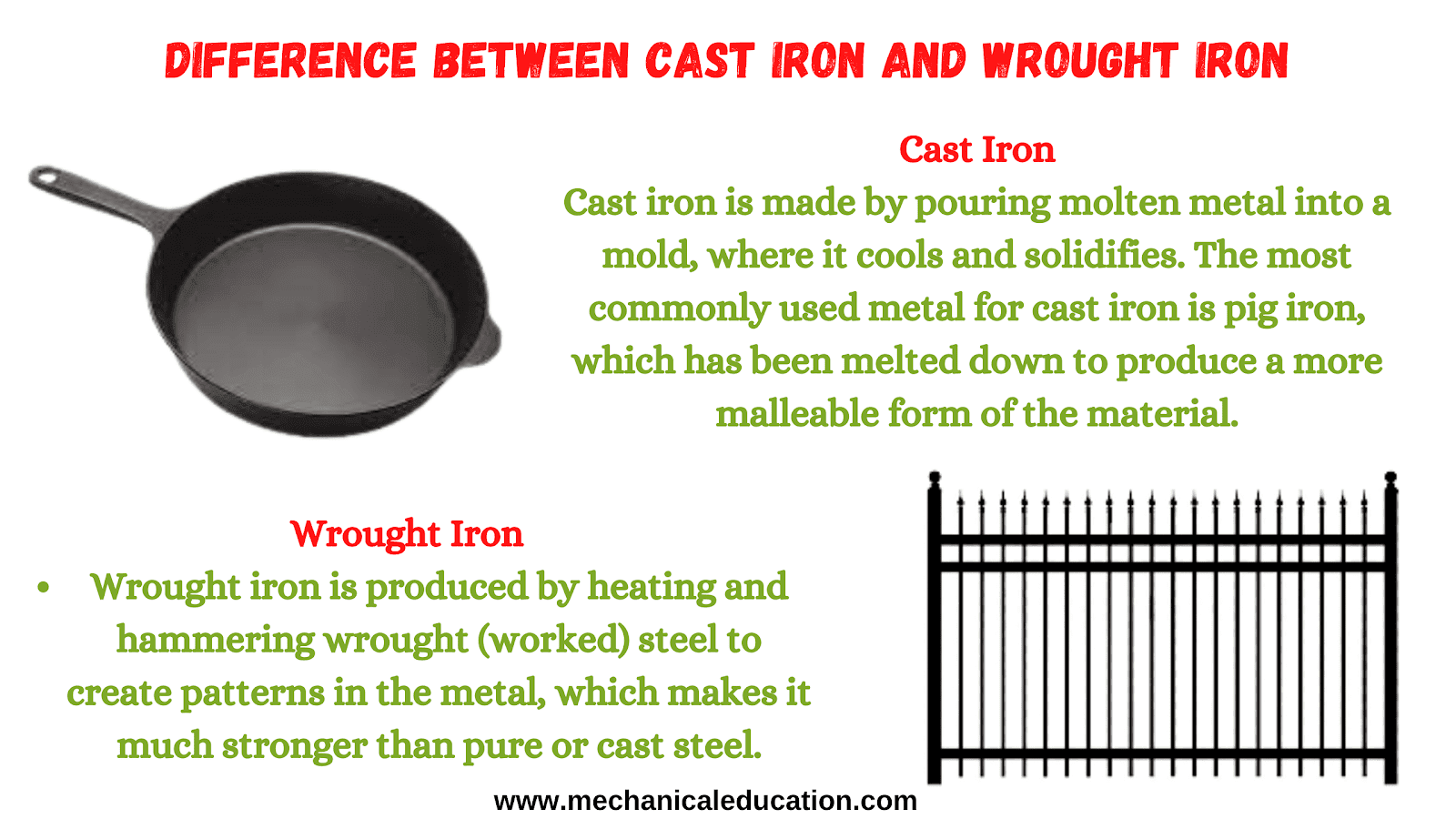Difference Between Cast Iron and Wrought Iron?
What is Cast Iron?
- Cast iron is made by pouring molten metal into a mold, where it cools and solidifies. The most commonly used metal for cast iron is pig iron, which has been melted down to produce a more malleable form of the material.
- Cast Iron is a kind of steel that has been cast into molds to create the desired shape. It is a durable material and can withstand high temperatures without cracking or breaking.
- Cast iron has a low carbon content, so the metal does not rust easily or cause oxidation in the air.
- Cast iron has a composition is about 97% pure iron.
- Cast iron can be heated up to high temperatures without melting or causing the surface to break down.
- Cast iron Can retain heat well and cook evenly due to its dense nature and nonporous surface.
- Cast iron conducts heat well, so it’s good for cooking food at low to medium-high temperatures.
- The materials used to make Cast iron can be recycled, which makes it an eco-friendly option when compared with other types of cookware such as stainless steel or Teflon.
What is Wrought Iron?
- Wrought iron is produced by heating and hammering wrought (worked) steel to create patterns in the metal, which makes it much stronger than pure or cast steel.
- Wrought Iron is made by using various techniques on an original piece of cast iron.
- Wrought Iron is another type of metal that was produced by heating and hammering wrought (un-alloyed) iron bars into shape, which produces an irregular grain structure.
- Wrought iron can be easily worked with a variety of tools, including hammers and other hand tools, as well as machines such as pneumatic and hydraulic presses.
- Wrought iron is a type of iron that has been worked to be malleable and ductile enough to be drawn into thin sheets for use in engineering applications.
- There are many types of wrought iron including structural steel, decorative ironwork, garden furniture, hand tools, armorsmithing, and sculptural works.
- Wrought iron is a metal that is produced by heating iron ore in a blast furnace with coke (made from coal) and limestone.
Difference Between Cast Iron and Wrought Iron
Cast Irons are typically non-magnetic
Wrought Irons have a small amount of magnetic material mixed in with the steel to allow them to magnetize for use in magnets.
Cast Iron has lower carbon content than wrought iron, so it will not rust or corrode easily. In addition, cast iron can be used for high-temperature cooking because of its ability to absorb heat.
Cast Iron contains low carbon content while Wrought Iron has high carbon content.
Wrought Iron is brittle and cannot tolerate high temperatures without losing its strength.
The main difference between cast iron and wrought iron is that the latter is stronger, but not as ductile. Wrought iron can be cast into shapes or hammered into shape, whereas cast iron cannot.
Cast Iron has a thin, gray layer of silicon carbide which can be polished to give it a glossy finish. Wrought Iron is used for items such as decorative hardware, architectural details, fireplace tools, etc.
Cast Iron is a soft metal compared to Wrought Iron.
Cast Iron can be used for high-temperature cooking because of its ability to absorb heat. Wrought Iron is brittle and cannot tolerate high temperatures without losing its strength.
Cast Iron is harder than Wrought Iron. which makes it better for cooking, heating, and keeping food warm.
Cast Iron is heavier than Wrought Iron, which makes it easier to cook over an open fire or stovetop.
Cast Iron is that it rusts easily if not properly cared for.



